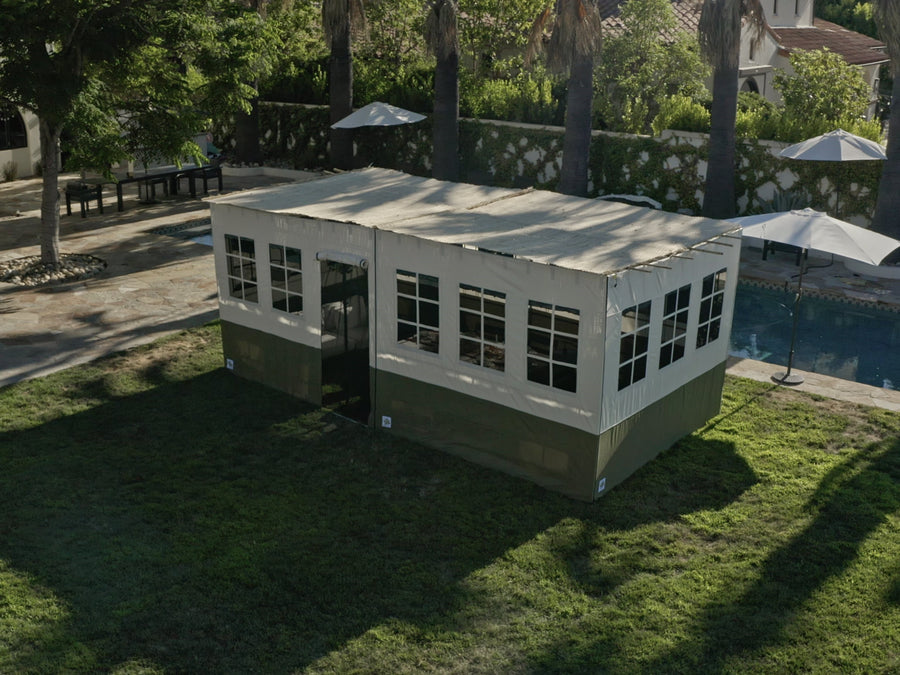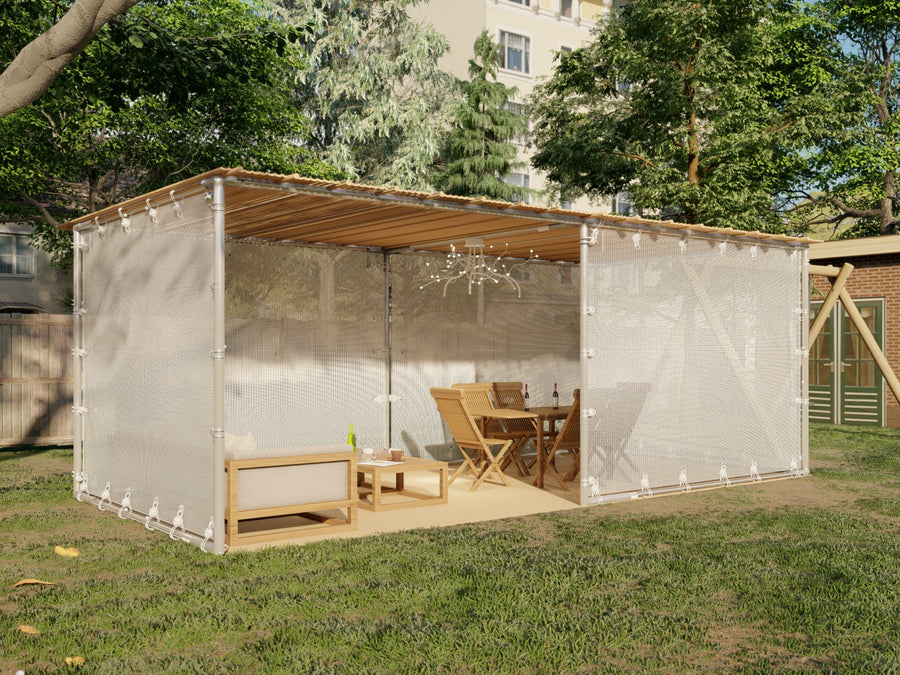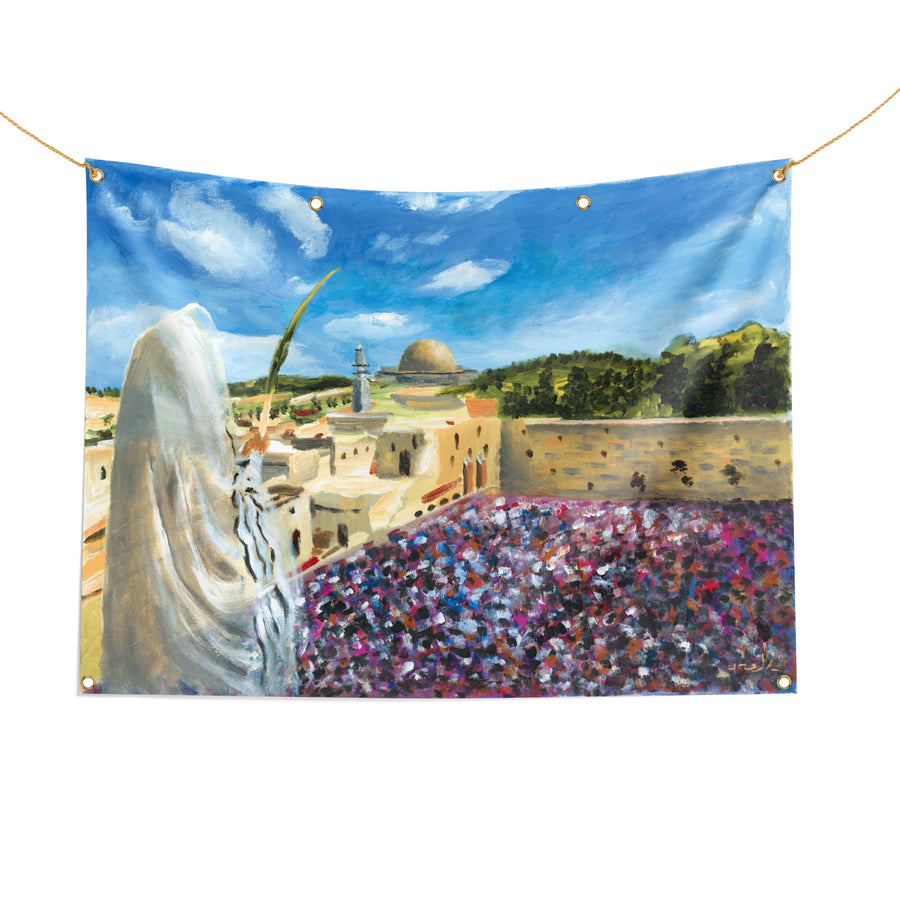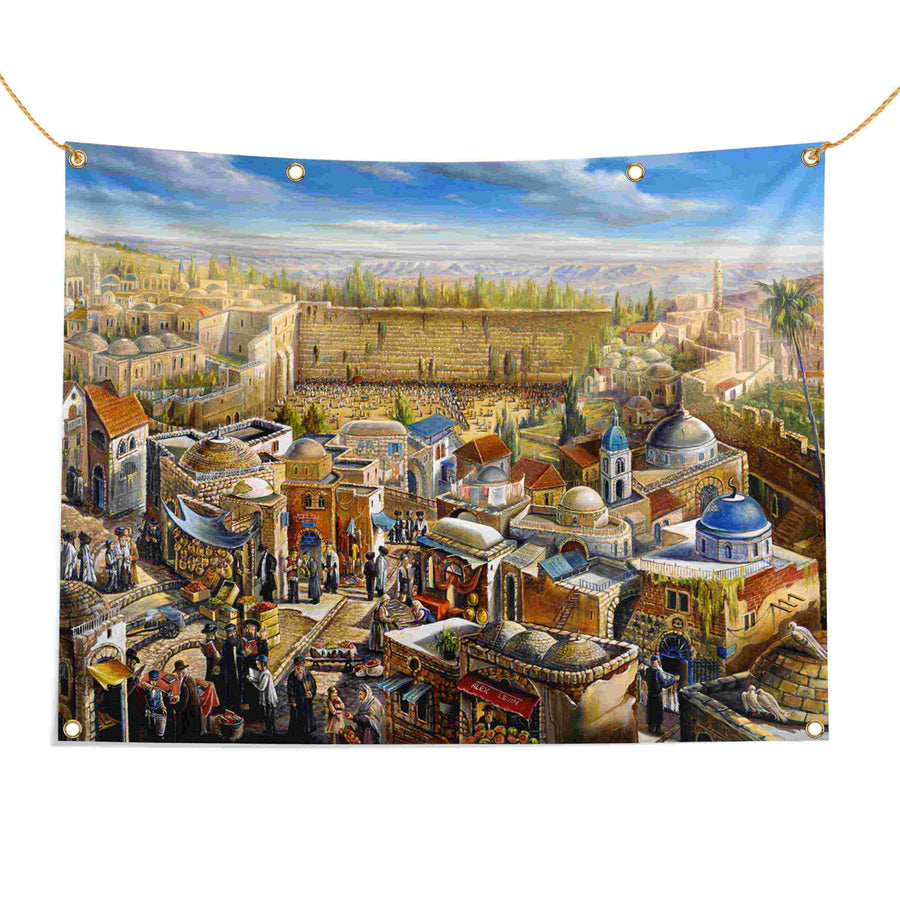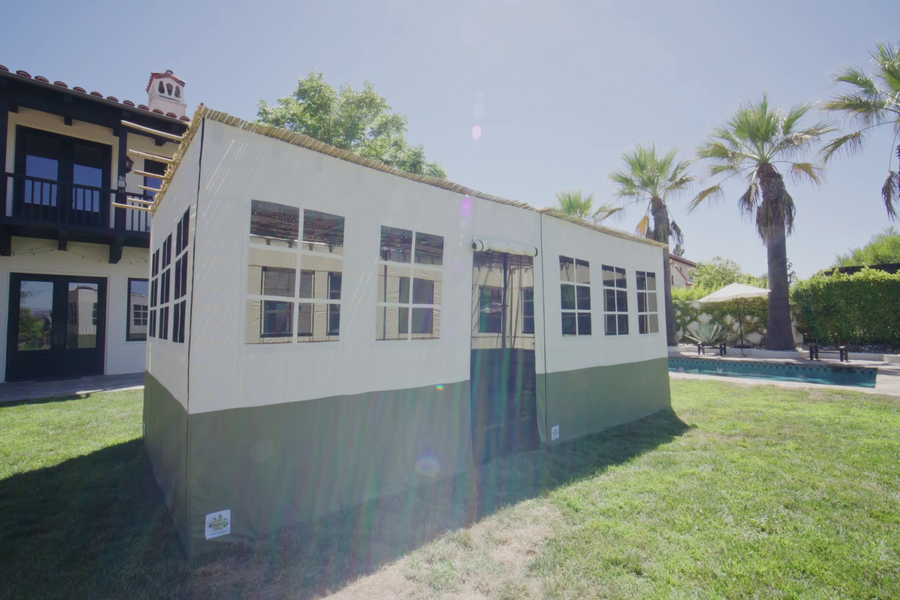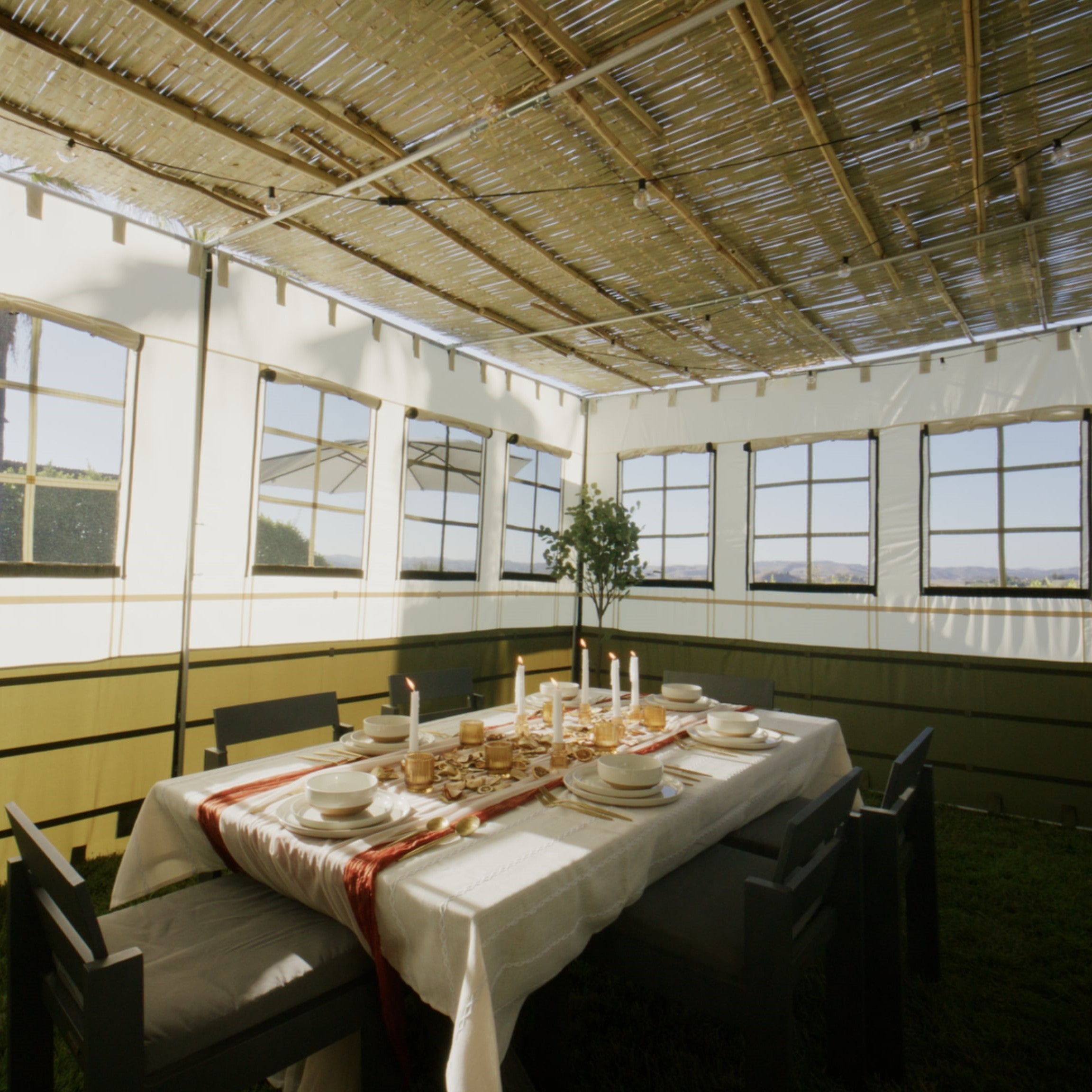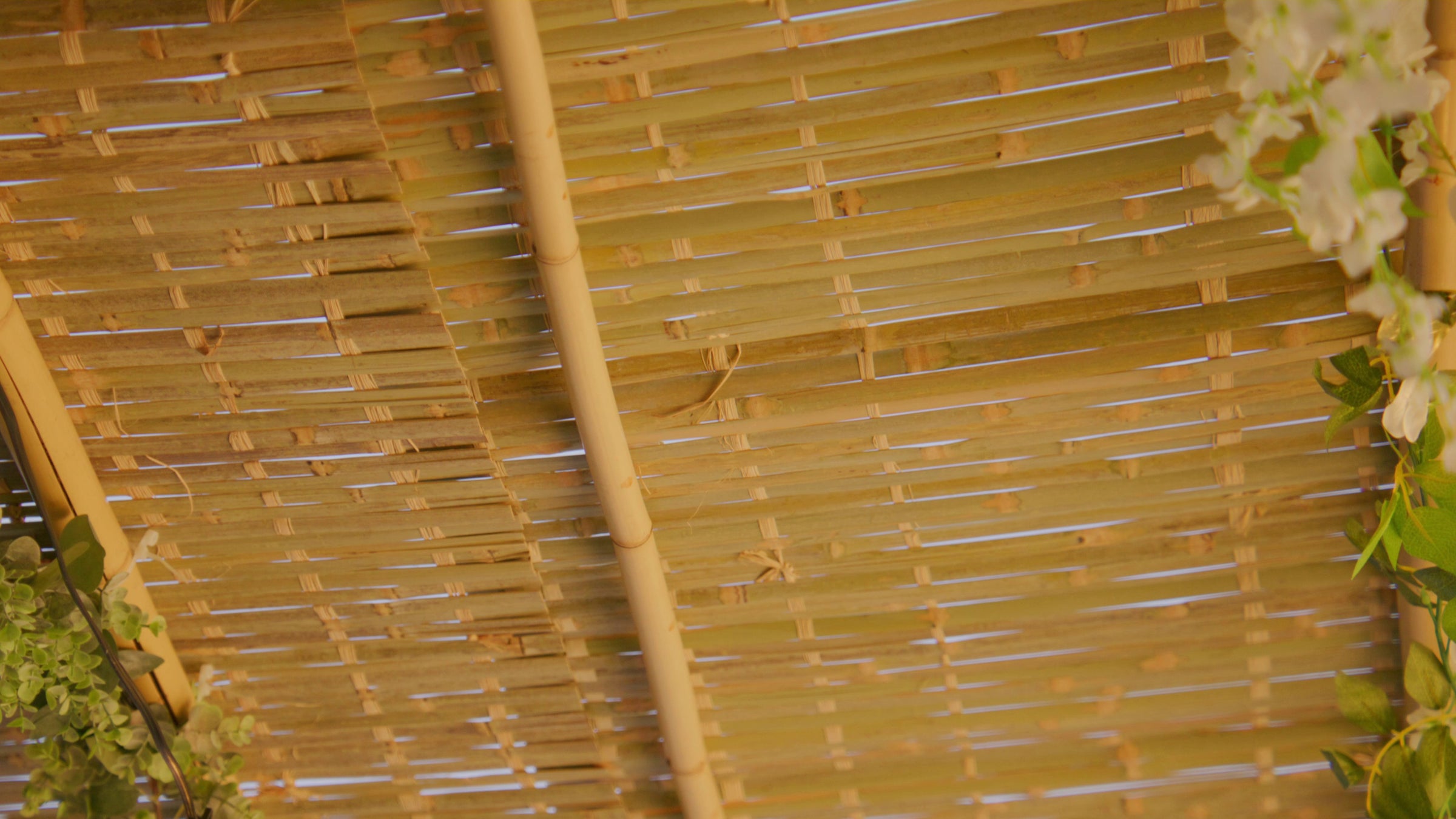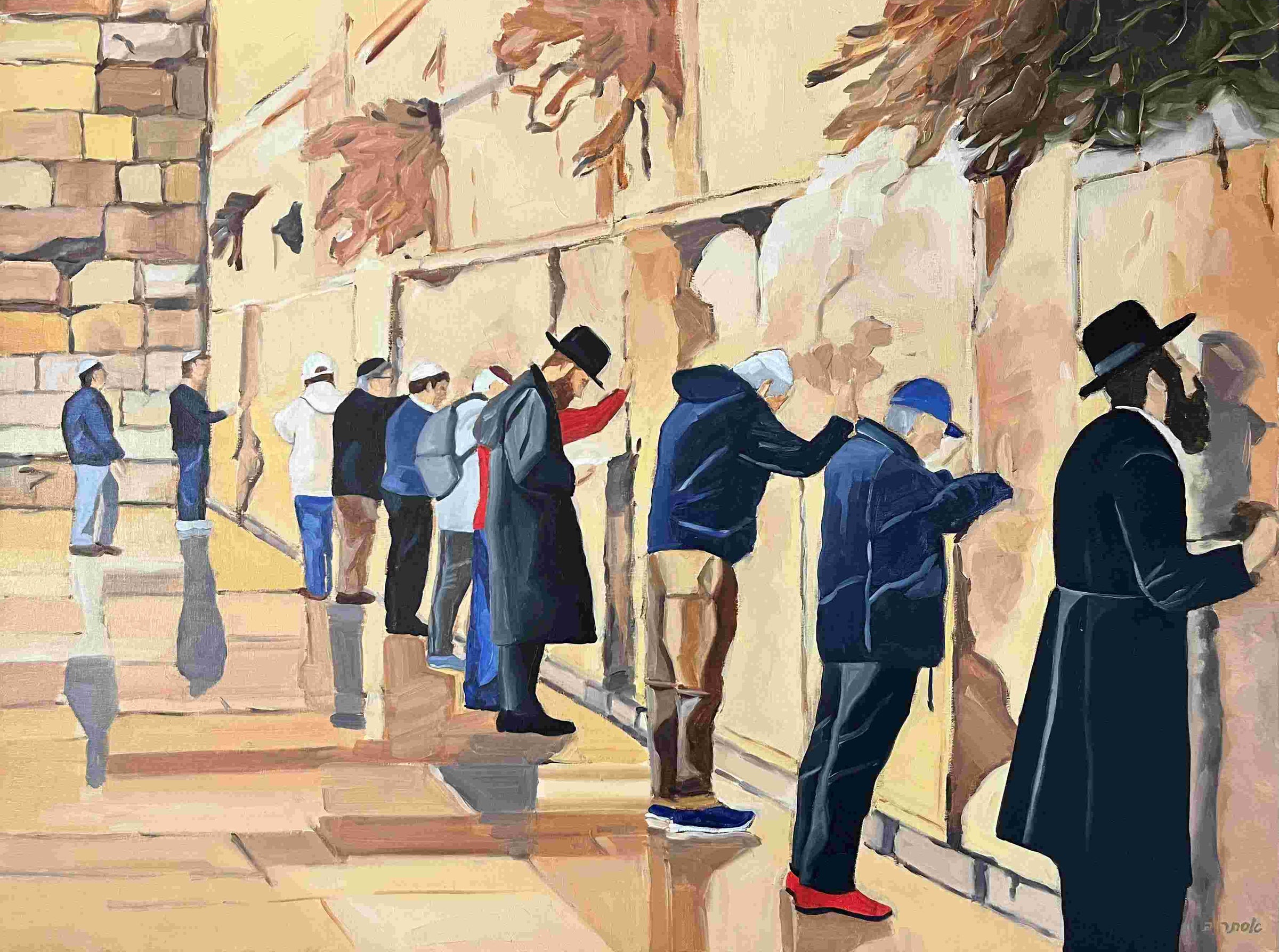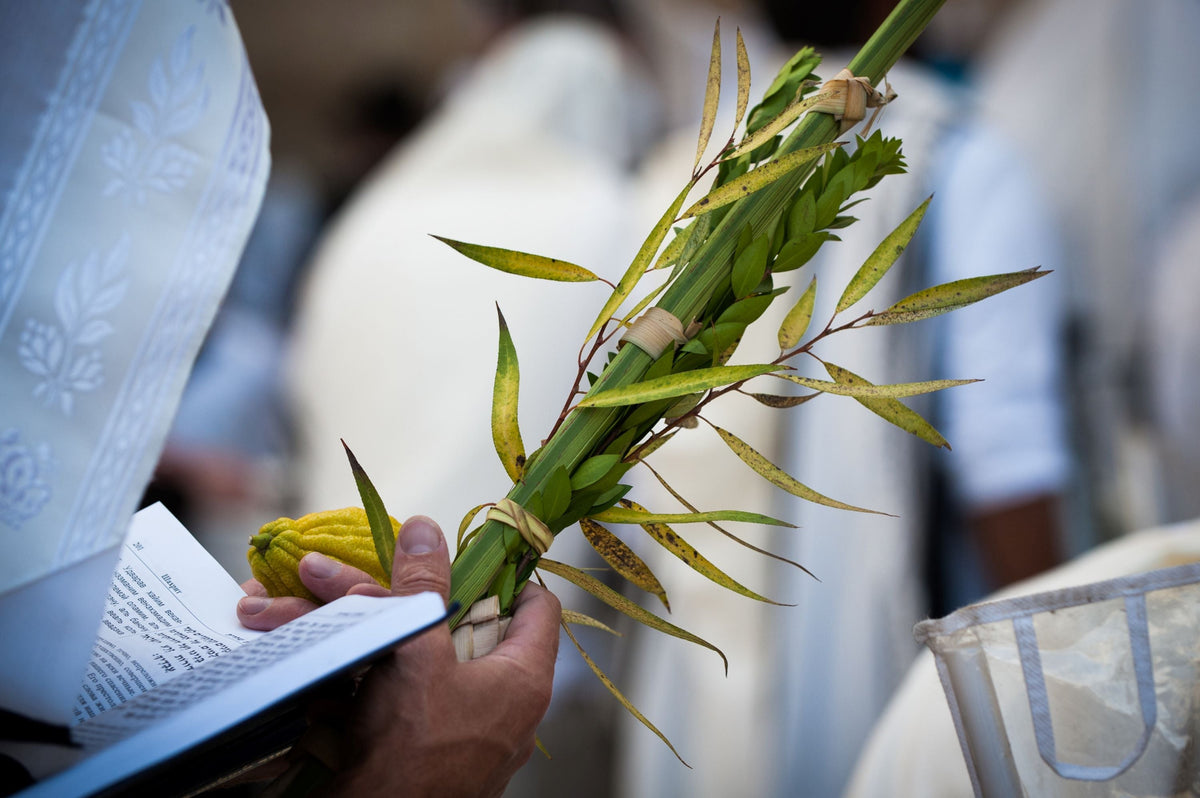

Table of contents
Let’s talk Hoshanot – a word that’s as fun to say as the customs behind it are to observe. Hoshanot comes from the words ‘hosha na’ – which roughly translates to “please bring us salvation! ” It’s a key feature of Sukkot , and it includes two main components: the special prayers recited each day while holding the lulav and etrog, and the rather unique practice of beating willow branches (yes, you read that right) on the seventh day of Sukkot, known as Hoshana Rabbah. Let’s dive into each of these.
A Journey Back to the Temple Times
Picture this: It’s Sukkot in Temple times. In addition to people relaxing in Sukkahs and waving the Four Kinds, the Temple priests had their own special addition to the festive celebrations. They’d take willow branches, place them beside the altar with the tops bent over, sound the shofar, and circle the altar while chanting, “Ana Hashem hoshiah na! Anah Hashem hatzlichah na!”– which is ancient Hebrew for “Please, G‑d, bring us salvation and success! ” On Hoshana Rabbah, the final day of Sukkot, they’d do this seven times around the altar in a grand finale of sorts.
This whole ceremony wasn’t just an improvisation – far from it. This ceremony was part of the oral law passed down from Moses at Mt. Sinai. Later on, the prophets decided to spread the joy beyond the Temple, and now it’s a global Jewish tradition. Since we no longer have the Temple, the action has moved to synagogues, where we circle a Torah scroll placed on the bimah (Torah reading table) instead of the altar. The Torah, after all, is our source of atonement now that we no longer have the altar.
The Daily Hoshanot Routine
Every day of Sukkot (except Shabbat), we do Hoshanot as part of the morning service. Here’s how it goes down:
When and What:
After the Hallel prayer (or at other points, depending on custom), a Torah scroll is taken from the ark. The chazan (cantor) and the congregation then make a circuit around the bimah while carrying their lulav and etrog set (which you can order here ), pressing them close to their hearts.
More the Four Species with our lulav and etrog series below:
What to Say:
The chazan leads with four lines, each calling out for divine help, and the congregation repeats each one. After that, the specific Hoshanot liturgy for the day is recited while circling the bimah.
Wrapping It Up:
After the procession, everyone returns to their places to finish the prayers. You keep holding the Four Kinds until right before the kaddish prayer.
On Shabbat:
Things slow down a bit on Shabbat. There’s no circling with the Four Kinds . Some communities skip Hoshanot entirely, while others might open the ark and say the prayers without any movement. Chabad has its own twist – they catch up on the missed Hoshanot on the next day.
Hoshana Rabbah: The Grand Finale
Hoshana Rabbah is Sukkot’s grand finale, where the Hoshanot prayers ramp up, and everyone feels the weight of the year’s final judgment. It’s also the day we pray for rain for the coming year – crucial for any agricultural society and, you know, not bad for us city folks, either.
On this day, all the Torah scrolls come out, and the congregation circles the bimah seven times, echoing what was done in the Temple. The prayers are similar to the previous days, with an extra stanza thrown in for good measure.
And then comes the most curious part: the willow-whacking! After the prayers, there’s a tradition to take a bundle of willow branches (known as hoshanot) and beat them on the ground. According to Kabbalistic teachings, this act has a mystical purpose: to sweeten divine judgments.
So there you have it – Hoshanot – a tradition that combines heartfelt prayers, ancient rituals, and a bit of good old-fashioned willow whacking. It’s a beautiful reminder of our connection to the past and a useful way to ask for divine help as we head into the new year.
